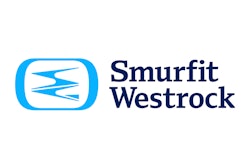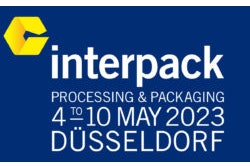Welcome to Sustainable Packaging Explained — your guide to sustainable materials, methods, and package design, produced by the Emerging Brands Alliance in conjunction with PMMI Media Group and PMMI - the Association for Packaging and Processing Technologies.
In this episode we’re looking at the difference between mono-materials, and multi-materials for packaging. Mono-materials are made from one type of polymer, and because of that can make recycling easier and more efficient since the material can be easily separated and recycled. Some examples of mono-materials include PP, PE, and PET, all of which can be made from virgin or recycled materials.
Polypropylene (PP), is a thermoplastic polymer commonly used in packaging due to its durability, resistance to heat and moisture, and the ability to be molded into various shapes. Some examples of polypropylene include food containers for yogurt or margarine, beverage bottle caps, medicine bottles, and packaging films. In some cases, PP may be blended with other materials to create a composite material that combines the properties of multiple plastics, and in this case would not be considered a mono-material.
Another example is polyethylene (PE) plastic, which is often used to make plastic grocery bags and freezer bags, shrink wrap, bubble wrap, and plastic beverage bottles. When considering sustainability, it’s important to note that while items like plastic grocery bags are recyclable, they are typically not included in curbside recycling programs. Convenience is a big factor in how sustainable a material selection is in practice, because if it isn’t easy for a consumer to recycle, it likely won’t be recycled to its full capability.
Polyethylene terephthalate (PET), often used for beverages, food, and personal care items, is another example of a mono-material that is an environmentally friendly choice for packaging because it can be recycled and turned into new products such as clothing, carpeting, and even new bottles, yet recycling rates for PET are not always high due to improper disposal or lack of infrastructure in some areas. But PET does have several benefits as a packaging material. It is resistant to impact and shattering, making it a safe option for products that need to be transported, and it also has good barrier properties, which means it can protect products from moisture, gases, and other contaminants.
Glass, another mono-material, is made from silica, which is derived from sand. Glass can be easily recycled into new products without losing quality or purity, making it a highly sustainable packaging option. In fact, glass has one of the highest recycling rates of any packaging material.
Paper is also mono-material because it is made from a single type of material, typically wood pulp. This makes it relatively easy to recycle, as the paper can be broken down and turned into new paper products without needing to separate out different materials. However, paper that has been treated with certain coatings or laminates may not be recyclable or may require specialized recycling processes. Packaging World editor Ann-Marie Mohan tells us more about developments in paper packaging.
There have been some really fascinating developments in paper packaging over the last several years where paper is replacing multilayer flexible plastic packaging for some very complex applications. Some of the things that are driving this change are consumers backlash against plastic packaging. Also, there are EPR requirements today that require a certain amount of recycled content in plastic packaging, which can be difficult to source right now.
And lastly, some of these larger brands have committed to making their packaging recyclable, compostable, or reusable. By 2025, and paper allows them an avenue to reach those goals. Some of the barrier requirements for some of these applications that are now going into paper, such as snacks, chocolates and beverages are barrier seal ability, print ability and TERI distance. One of the frontrunners for paper packaging in the confectionery industry has been Nestlé nuts developed a paper package for their Smarties chocolate candies in the UK.
This project took several years and involved creating a paper based flow wrap that provided tear resistance as well as barrier for the chocolate products. They were designed for 119 SKUs, changing the plastic packaging offered to paper so that they were using a renewable material as well as a water based coating inside the paper that allowed it to be recyclable.
Another very interesting application are bottles that are made from paper. Typically, if you wanted to use paper for a liquid such as a beverage or a household cleaning product, you would need some sort of barrier to protect the paper from the moisture. Today, companies are using bio based and water based coatings in order to provide that barrier. This makes these packages fully recyclable
There is a grey area where a mono-material can become multi-material. For example, some glass bottles have a plastic cap and a label made from paper or film. This combination of materials makes the bottle multi-material.
Multi-material refers to materials made up of more than one type of polymer or material, such as the example of the glass bottle with a plastic cap, or coffee bags that consist of multiple layers including paper, plastic films, and metal foils to protect the coffee from moisture and oxygen. Multi-materials can be difficult to recycle due to the need to separate and process each individual component, making them less environmentally friendly compared to mono-materials. However, multi-materials can also provide benefits such as improved strength, durability, or functionality that would not be possible with a single material.
Some multi-materials can be designed for easier recycling by using compatible materials that can be separated and processed together. For example, some forms of cartons are made from a combination of paper, plastic, and aluminum, but they can be recycled through specialized processes that separate and recover each material. Also, some companies are exploring ways to develop more sustainable multi-materials that use biodegradable or compostable materials instead of traditional plastics and metals.
Flexible packaging, consisting of pouches and bags, is usually made up of multiple layers of plastic films, foil, or paper. These layers are combined to create a material that is lightweight, durable, and provides good barrier properties to protect the contents inside. Flexible packaging is typically used for food products, beverages, pharmaceuticals, and personal care items. While there are some downsides to using flexible packaging, its many benefits make it a popular choice for manufacturers looking for cost-effective ways to package their products.
Because flexible packaging is lightweight, it can be easily transported in large quantities, making it more efficient to transport than other types of packaging. The materials used in flexible packaging are typically less expensive than those used in rigid packaging, which makes it a more cost-effective option for manufacturers. It is also customizable through printing methods. Some of the downsides of flexible packaging are limited durability compared to rigid packaging, and the difficulty of recycling and the resulting environmental concerns.
Multilayer Multi-Material flexible packaging has some great sustainability advantages. It's lightweight, so it's easier to transport, and it requires less energy and less water to produce. However, until recently, the problem with multilayer flexible packaging is that the only end of life options were either incineration or landfill. However, over the last five or so years, film producers have been innovating around new film structures that are mono material but yet multilayer.
In this instance, they are using polyethylene film because the construction is just a single film. It is able to be recycled. This usually means that it's recycled in the store drop-off program, which means it's down cycled to things like park benches or playground material. New technologies such as advanced recycling, however, may mean that in the future, both multilayer mono material and multi-layer material packages will be able to be recycled.
In this scenario, they're broken down to their basic components, which can then be used to create new virgin plastics.
Both mono and multi-material options have benefits and drawbacks, and when weighing the two, it is best to perform a life-cycle analysis of a product to determine which will be the most sustainable option for the situation.





![Toppanimage2[4]](https://img.packworld.com/files/base/pmmi/all/image/2023/03/Toppanimage2_4_.6421888e5c3c6.png?auto=format%2Ccompress&bg=fff&fill-color=fff&fit=fill&h=167&q=70&w=250)





















